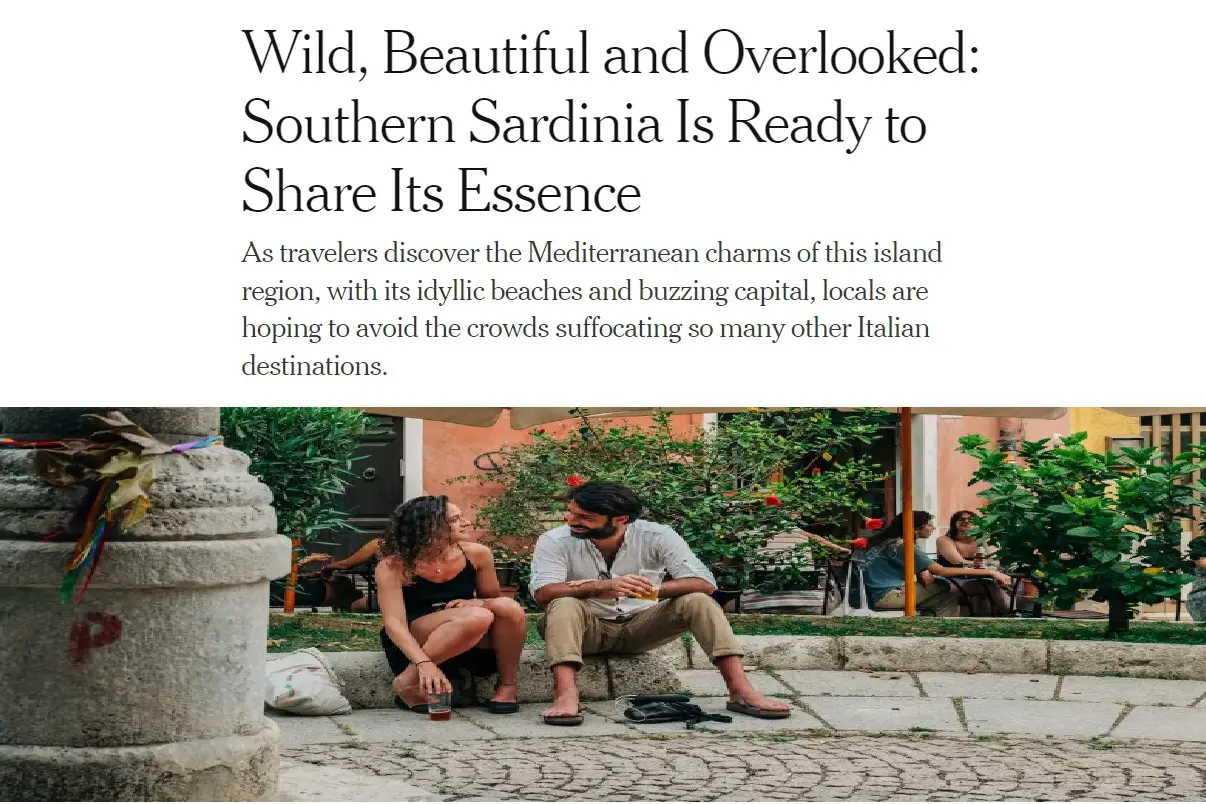The New York Times: «Southern Sardinia wild, beautiful and ignored»
From Cagliari to Piscinas, passing through the Giara and the sound garden of Sciola in San Sperate: the experiential journey praised compared to the invasion of touristsPer restare aggiornato entra nel nostro canale Whatsapp
“As travelers discover the Mediterranean charm of this island region, with its idyllic beaches and lively capital, locals hope to avoid the crowds that suffocate so many other Italian destinations.”
The spring trip of the New York Times journalist, Laura Rysman, to Southern Sardinia is contained in a subtitle of an article that focuses on a journey made up of environmental, cultural and gastronomic experiences, between Cagliari, the Sulcis and the interior of Campidano, to discover that Sardinian nature defined as «fragile, as heritage always is», because « it depends as much on the local people and on the committed politicians as on the visitors, those who face the journey as a cultural immersion rather than as a list of desires: and we can all play a role in this."
The discovery of the island by the NYT starts from the capital - "a small capital of the Mediterranean" but also "a city that belongs to its residents unlike Florence, Venice or other cities teeming with tourists" - with the "extravagant" party traditional of Sant'Efisio, and then immerse yourself in the alleys of the Marina district, in front of the port, to taste typical dishes based on fish and wild asparagus.
The journalist chats with restaurateurs who look with confidence to the new political course in the Region and in Cagliari - today led by Alessandra Todde and Massimo Zedda - above all to facilitate «the opening of small businesses, for young people and immigrants, regulate rents for holidays and increase the cultural offer, thus attracting tourists even beyond the summer months". And even if the cultural offer, "compared to other cities, may seem more limited", the NYT underlines the presence of the Archaeological Museum with its "fantastic collection of ancient Nuragic, Phoenician and Roman artefacts" and the "Nuragic archers carved in stone , known as the Giants of Mont'e. Prama."
But he also mentions Pinuccio Sciola's Sound Garden in San Sperate, the Nuragic palace of Barumini and, on the environmental side, the pink flamingos in the wetland area of Cagliari, in the Giara park with its "last wild horses in Europe" and the cork plateau. Here too, slow tourism emerges with a visit to a dairy farm with an adjoining guesthouse and the discovery of the work of local artisans. Then in Sulcis with the «attempt to transform a territory now emptied by the mining industry into a natural territory» and with «the surrounding park becoming part of the Santa Barbara hiking trail».
In spring, however, it is already warm and people go to the seaside: the NYT talks about the Poetto beach, "kilometres long", and that of Piscinas with its "highest sand dunes in Europe".


